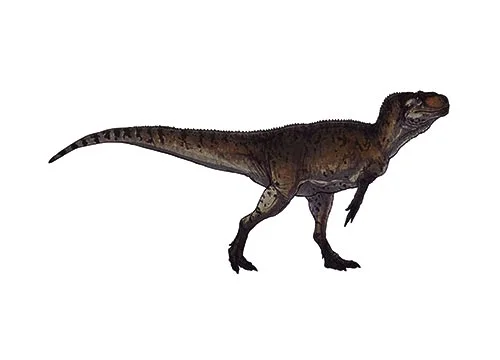Piatnitzkysaurus (Piatnitzky’s lizard)

Pee-at-nits-kee-sore-us
Jose Bonaparte - 1979
Carnivore
Estimated 5-6 meters long
Large Theropod
P. floresi (type)
Argentina - Canadon Asfalto Formation
Late Jurassic, 154-150 million years ago
Piatnitzkysaurus Facts
Piatnitzkysaurus is a genus of theropod dinosaur that lived during the Late Jurassic period, around 154-150 million years ago, in what is now Argentina. The name “Piatnitzkysaurus” is derived from the surname of the Argentine paleontologist Alejandro Mateievich Piatnitzky, who discovered the first fossils of the dinosaur in 1970.
Piatnitzkysaurus was a medium-sized theropod, estimated to have been around 5-6 meters (16-20 feet) long and weighing around 500 kg (1100 lbs). It had a slender build, with long legs and a long, stiffened tail that may have helped it maintain balance while running. Like other theropods, it was bipedal and had sharp claws on its hands and feet.
Piatnitzkysaurus is classified as a basal tetanuran, meaning it is a close relative of the more derived tetanurans such as allosaurs and tyrannosaurs. It had several unique features, including a peculiar dentition with small, leaf-shaped teeth in the front of its mouth and larger, blade-shaped teeth towards the back. It also had a unique arrangement of the hip bones that gave it a wide range of motion in its legs.
Fossils of Piatnitzkysaurus have been found in the La Matilde Formation in Argentina, which dates to the Tithonian stage of the Late Jurassic period. Other dinosaur genera found in this formation include the sauropod Patagosaurus, the theropod Condorraptor, and the ornithischian Agilisaurus.
Overall, Piatnitzkysaurus is an important dinosaur for understanding the early evolution of theropod dinosaurs, and provides valuable insight into the diversity of dinosaurs that lived during the Late Jurassic period in South America.



